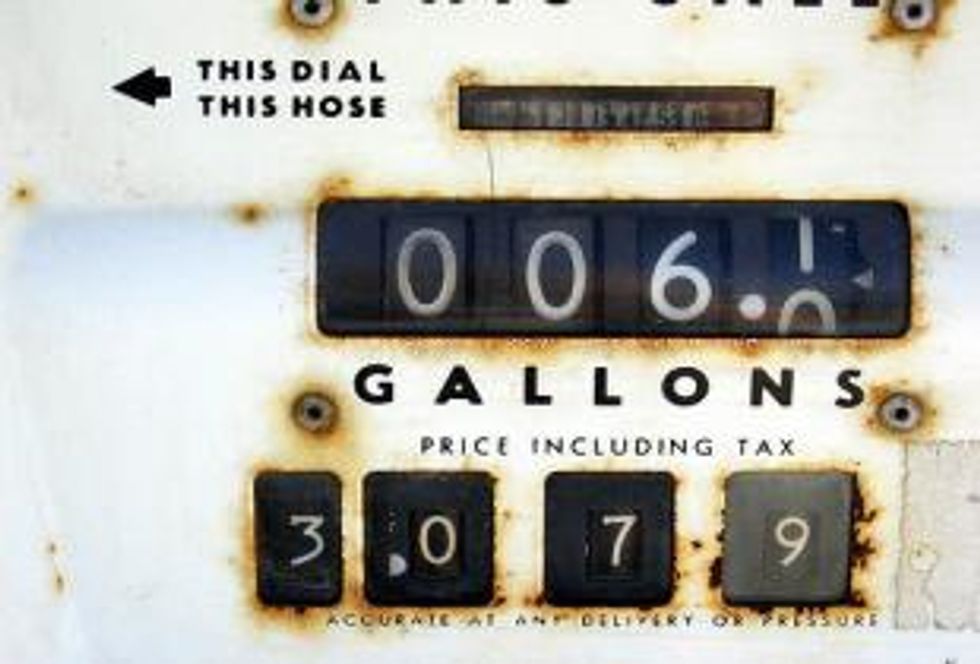Despite the volatility involved in investing in commodities and the energy market, the United States Gasoline Fund has recently proven adept at tracking gasoline prices.
By Robert Sullivan—Exclusive to Oil Investing News
Rising prices at the pump have been putting the squeeze on vehicle owners recently, with gas prices in the United States up by close to 80 cents since the beginning of the year to a national average of $3.84 per gallon. Gas prices are typically bumped higher through spring as demand increases in the lead-up to the summer driving season in the US, but the surge in oil prices over the last four months has dragged the cost of gas up substantially, gasoline being a refined product of crude oil. Naturally, gas prices will remain high and rising so long as crude continues its upwards march.With the pinch from costlier gas likely to curb consumption and slow a still recovering economy, investors looking for relief may want to consider the United States Gasoline Fund LP (UGA) (NYSE:UGA). The UGA, like other exchange traded funds, is comprised of a mixed of focused investments that track a particular index, commodity or basket of assets. The investment objective of the UGA is for its net asset value to track and reflect in percentage terms changes in the price of gas, which it accomplishes by investing primarily in New York Mercantile Exchange (NYMEX) front-month futures contracts of wholesale reformulated gasoline blendstock for oxygen blending (RBOB), the benchmark gasoline contract on the NYMEX.
Recent track record
Despite the volatility involved in investing in commodities and the energy market, the UGA has recently proven fairly adept at tracking gas prices. A roughly 26 percent rise in the average price of gasoline in the US since January 1st has been matched by a 28 percent increase in the value of the UGA over the same period. Given the nature of commodities markets this is a relatively solid performance for an energy ETF; the United States Oil Fund LP (USO) (NYSE:USO), a similar ETF that tracks West Texas Intermediate (WTI) on the NYMEX, has increased in value by 14 percent since the beginning of the year even though the price of WTI has jumped by more than 23 percent over the same stretch.
Interestingly, the fund debuted in February 2008 right before the run-up in oil prices that peaked in July. It hit its record high of $66.33 a share just over five months after inception, when the average price of gasoline in the United States topped out at $4.12 per gallon. Gas prices three years ago relative to the value of the fund aren’t useful for forecasting the value of the UGA now given other variables that have since impacted the fund, but the value of the UGA in 2008 did track gasoline prices on a percentage basis at roughly the same clip as recently – 33 percent and 32 percent increases for the value of the fund and the average price of gasoline in the US respectively from the inception of the UGA in February until the peak price of gasoline in mid-July 2008. This would suggest that the UGA still has some room for growth, particularly over the next month before a possible summer price peak, if gas continues to push towards and beyond $4 a gallon.
Using gasoline ETF’s as a hedge
That, however, while seeming increasingly likely, is far from a certainty. Crude remains above $110 a barrel, but there is a debate over whether market fundamentals support oil at this price. Even so, hedging with a gasoline-focused exchange traded fund is also popular among investors and businesses that rely heavily on gas or similar refined derivatives of oil. Further price hikes mean profit from the investment, while losses from a sudden drop in the price of oil and consequently gasoline are offset by the reduction in operating costs resulting from cheaper fuel.





